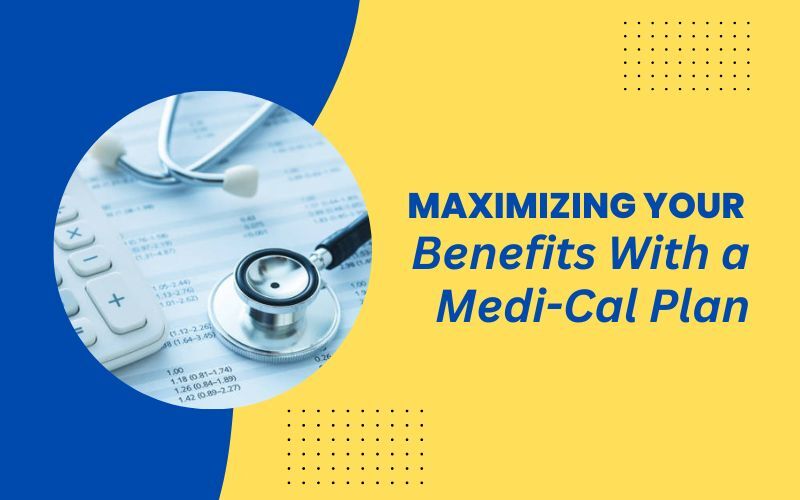With a Medi-Cal plan, you can access a wide variety of preventive and wellness services at a very low cost. You can also benefit from prescription drugs, preventive care, and managed care medical plans. However, it is important to understand how to use your benefits best to get the most out of your benefits.
Preventative Services
The Affordable Care Act (ACA) requires that preventive services be covered under most health insurance plans like Medi-Cal health plans without cost sharing. This includes immunizations, screening tests, and physical exams. It also includes all FDA-approved contraceptives.
Preventive services are a vital component of overall health. These services can help you delay illness and reduce your risk of disability and death. Getting them can also help you save money.
You can get preventive care services under a health plan at any age. Some guidelines can help you decide which preventive screenings are right for you.
Some of the most common preventive services include flu shots, cancer screenings, and physical exams. However, these tests may require a follow-up visit to assess the results.
A yearly flu shot can help you stay healthy, and it can also help protect you from serious flu symptoms and hospitalization. For pregnant women, there are additional guidelines to follow.
You can receive preventative services from an out-of-network provider, but you will pay a fee. If your out-of-network provider cannot provide you with the needed services, you should look for another provider.
Most major medical plans are required to cover preventive services. However, questions have been raised about how they are being implemented. There have been legal challenges over aspects of the requirement.
Medical management practices can also limit the types of services covered. This includes restricting the number of providers and frequency of services.
Prescription Drug Coverage
You might have a health plan that covers prescription drugs, but does it provide enough coverage? If not, consider purchasing an individual prescription drug plan for monthly payments. They may offer mail-order medication delivery and pharmacy cost benefits that aren’t covered by insurance.
Most prescription drug plans cover the majority of prescription drugs. However, some drugs are only covered in certain situations, such as when you are in a hospital or for a specific condition. So before you decide on your health insurance, ask your agent or insurer how the formulary works.
Prescription drugs are generally divided into three categories. These are formulary drugs, non-formulary drugs, and excluded drugs. Some of these medications require prior authorization. This means that your physician has to give a medical reason for allowing you to receive the medication. Also, some medications have dosage restrictions. It is possible to appeal these restrictions, but it may take months to complete the appeal process.
Drugs in various tiers may require copays, coinsurance, or other costs. For example, a generic prescription may have a $3.70 copay, while a brand-name prescription will have a 25% coinsurance rate. Depending on the type of prescription, the copay or other costs may be higher or lower than the average family plan deductible.
Managed Care Medical Plans
Managed care medical plans with Medi-Cal are health insurance plans that provide high-quality, cost-effective care. They are managed by a company that negotiates with a network of physicians, hospitals, clinics, and other medical facilities. Members choose a primary care provider from the network, and the plan pays for care received within the network. However, some services may require prior authorization or referral.
The Medi-Cal program provides health coverage for people with limited income. It also covers pregnant women and children in foster care. Adults aged 50 and older are also covered. In addition, it offers mental health services to individuals with mild to moderate mental illness.
The Medi-Cal program operates under six different managed care models. Each of these models varies in scope and is unique in its structure. Some models provide health services through a community-based public plan, while others are commercial plans.
Employer-Sponsored Health Insurance
Employer-sponsored health insurance is the primary source of health coverage for US workers. A wide range of options exists for this type of coverage. These include major medical policies, health maintenance organizations, and preferred provider organizations.
In recent years, employee contributions to health insurance premiums have risen dramatically. Employees can save money in tax-advantaged accounts, such as health savings accounts.
The quality of an employer’s health plan can influence employee take-up rates. Studies have shown that workers who choose their employer’s offer are more likely to be satisfied with their care.
Health plans employers offer vary widely in terms of quality and price. For example, HMOs provide a broader range of health services than fee-for-service plans. While a high-quality plan increases the likelihood of employees taking up an employer’s offer, a low-quality plan can lead to workers opting for uninsured coverage.
Employees with access to an employer-sponsored health plan from a spouse’s employer may be more likely to enroll. Research has found that workers are more likely to enroll in an HMO than in a fee-for-service plan. However, the study also found that the amount of coverage available to a worker can depend on the individual’s income and other factors.
Individuals have many options, including health savings accounts, indemnity plans, and health maintenance organizations. PPOs, which allow users to use doctors outside the network, are popular for people who want more flexibility in selecting a physician.
In addition to the types of health plans offered by an employer, other factors determining employee take-up rates include plan costs and generosity. Plan generosity is a summary measure of the percentage of total healthcare expenditures covered by a plan. Higher-income individuals are more likely to participate in an employer-sponsored plan than low-income individuals.
Also Read: How To Write A Guest Post In The Best Way?




